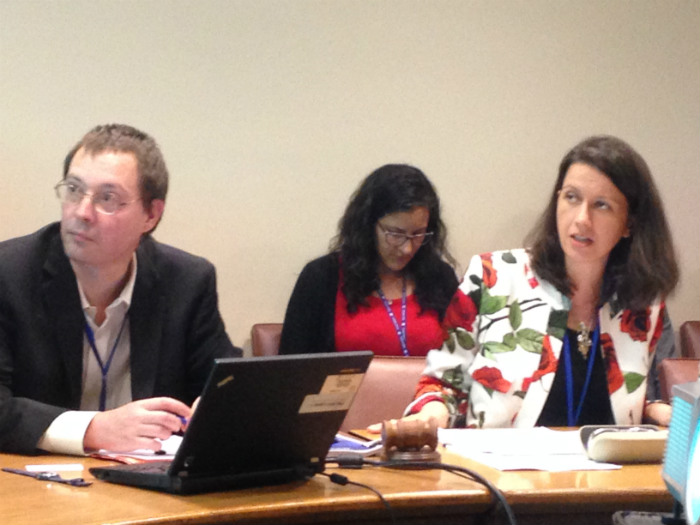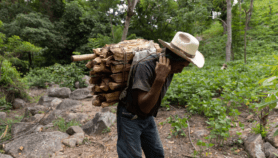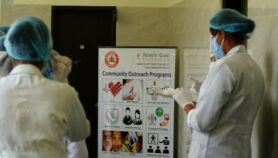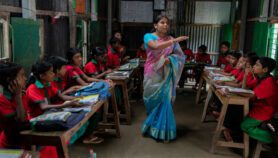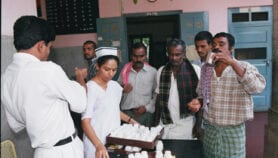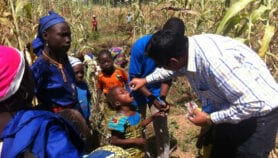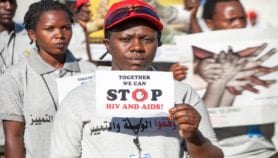Send to a friend
The details you provide on this page will not be used to send unsolicited email, and will not be sold to a 3rd party. See privacy policy.
The Global Sustainable Development Report outlines the world’s progress towards achieving the Sustainable Development Goals – but oddly its production started before the goals were confirmed, as part of a pilot initiative to ensure reporting is solid from the start. Lucilla Spini, the head of science programmes at the International Council for Science, who acted as a peer reviewer for the report, talked to SciDev.Net director Nick Perkins at the UN’s High Level Policy Forum on 15 July.
In this interview, Spini gives readers her insights into the report’s creation and publication process, and addresses some of the controversies. She also reveals how the report will impact UN science initiatives and efforts, especially with regards to a pledge to “leave no scientists behind”.
The production of the Global Sustainable Development Report (GSDR) has been somewhat controversial. Can you describe the writing process?
The pilot editions, which were published over the last two years, were drafted in an interim period while Agenda 2030 was still being negotiated and during the initial months of its implementation. There wasn’t yet any definite guidance on their production. In fact, Paragraph 83 of Agenda 2030 invites consultations on the scope, methodology and frequency of the report so as to make a decision at the current Session of the High-Level Political Forum on Sustainable Development.
However, the UN Department of Economic and Social Affairs (DESA), was tasked by the Secretary-General Ban Ki-Moon “to undertake in-depth analysis and evaluation of trends and scientific analysis in the implementation of sustainable development”. So since 2013, its writing has been coordinated by DESA via compilation of inputs by scientists. Inputs were provided via crowdsourced briefs, expert meetings and surveys.
How is the report structured?
The report is structured in chapters, the titles of which have been decided by the UN. Chapter 6, for example, provides a summary of the types of topics which have been recurrent in the three editions, such as emerging issues and “nexuses”. In the future, it will be important to have these recurrent themes, but also have regular chapters on technology and innovation, and on those left behind.
How has the process of compiling the report contributed to its message?
I would like to highlight that the main message from the GSDR pilot-process is the importance of an informal and open process for scientists to contribute to Agenda 2030. It’s really crucial to have scientists from around the world on board during such a process to ensure that global views are heard and all communities are represented in order to convey knowledge which can empower policy-makers. We also need to make sure that all disciplines contribute accordingly to the report to incorporate their knowledge, solutions and suggestions. The process of producing the report has been as important as the report itself and it should be continued, leaving no scientist behind.
Do you think this report points to new directions for the science-policy interface?
The report has a very unique feature in the science/policy interface, as it provides a venue for emerging issues. This is crucial for sustainable development as we need to be prepared for new challenges in the implementation of Agenda 2030, for example emerging diseases, cyberattacks, and large-scale involuntary migration. If the High Level Political Forum agrees on issuing the report only every four years, then the space for emerging issues should be the backbone of the science-policy interface at the annual sessions of the Forum.
What does the report suggest about research agendas and research use around the SDGs and 2030 Agenda?
The report is not a research agenda–setting report. It should be seen more as a “snapshot” of current research and knowledge. However, the chapter on emerging issues and the chapter on nexuses provide insights into new ways and approaches on research related to SDGs and Agenda 2030. For instance, Chapter 2 of the 2016 GSDR highlights research delineating important linkages from infrastructure to inequality, for example in gender disparity in transport access and use, and in peri-urban poor access to water and sanitation.
How do you expect the report to be used? What's being done to support this?
The report will be used by scientists and policy-makers as a reference document. National and international organisations are exploring opportunities to raise awareness of this report, including via translations and events. The international scientific community is now looking at how to support the “new type” of GSDR – currently being agreed by the High Level Political Forum – to build on the momentum created by DESA.
This is, of course, in collaboration with many organisations, including ICSU. We will be working towards ensuring open, rolling and informal contributions by scientists as done for the pilot editions, and towards strengthening multi-stakeholder coordination, science-policy capacity-building and science-mainstreaming within the framework of the High Level Political Forum.Personally, what is your most important take-home message from the report?
Personally – as an anthropologist – the most important take-home message of the report is the definition of “those left behind” from a science and policy perspective, as done in chapter 1 of the report. In fact, this provides a concrete perspective for a “slogan” and therefore helps to identify concrete next steps towards ensuring that no one is left behind within the operationalisation of the Sustainable Development Goals.


